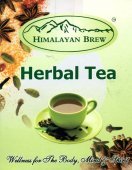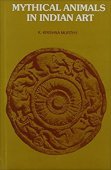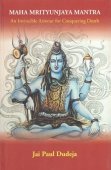Cai, Caī, Caí: 7 definitions
Introduction:
Cai means something in Hinduism, Sanskrit, Marathi, Jainism, Prakrit, biology, Tamil. If you want to know the exact meaning, history, etymology or English translation of this term then check out the descriptions on this page. Add your comment or reference to a book if you want to contribute to this summary article.
In Hinduism
Ayurveda (science of life)
Nighantu (Synonyms and Characteristics of Drugs and technical terms)
Source: WorldCat: Rāj nighaṇṭuCaī in the Hindi language refers to Gajoṣaṇā, a medicinal plant identified with Piper retrofractum Vahl. or “Balinese long pepper” from the Piperaceae or ‘pepper’ family of flowering plants, according to verse 6.14-15 of the 13th-century Raj Nighantu or Rājanighaṇṭu. The sixth chapter (pippalyādi-varga) of this book enumerates ninety-five varieties of plants obtained from the market (paṇyauṣadhi). Other than the Hindi word Caī, there are more synonyms identified for this plant among which ten are in Sanskrit.

Āyurveda (आयुर्वेद, ayurveda) is a branch of Indian science dealing with medicine, herbalism, taxology, anatomy, surgery, alchemy and related topics. Traditional practice of Āyurveda in ancient India dates back to at least the first millenium BC. Literature is commonly written in Sanskrit using various poetic metres.
Biology (plants and animals)
Source: Google Books: CRC World Dictionary (Regional names)1) Cai in India is the name of a plant defined with Setaria italica in various botanical sources. This page contains potential references in Ayurveda, modern medicine, and other folk traditions or local practices It has the synonym Panicum elongatum Poir., nom. illeg., non Panicum elongatum Salisb. (among others).
2) Cai in South America is also identified with Persea americana It has the synonym Persea gratissima var. vulgaris Meisn. (etc.).
Example references for further research on medicinal uses or toxicity (see latin names for full list):
· Journal of the Arnold Arboretum (1945)
· Enumeratio Stirpium Transsilvaniae (1816)
· Revisio Generum Plantarum (1891)
· Fragmenta Floristica et Geobotanica (1981)
· Transactions of the Kansas Academy of Science (1913)
· Bulletin of the Torrey Botanical Club (1892)
If you are looking for specific details regarding Cai, for example side effects, chemical composition, diet and recipes, health benefits, extract dosage, pregnancy safety, have a look at these references.

This sections includes definitions from the five kingdoms of living things: Animals, Plants, Fungi, Protists and Monera. It will include both the official binomial nomenclature (scientific names usually in Latin) as well as regional spellings and variants.
Languages of India and abroad
Marathi-English dictionary
Source: DDSA: The Molesworth Marathi and English Dictionarycaī (चई).—f (Or cāī) A disease attacking and eating away hair and wool. v lāga.
--- OR ---
cāī (चाई).—f A certain shrub. Its leaves are esculent. 2 An edible root of the genus Arum.
--- OR ---
cāī (चाई).—f A disease attacking and eating away hair and wool. Otherwise called kātara or kātarī & undarī. v lāga.
Source: DDSA: The Aryabhusan school dictionary, Marathi-Englishcaī (चई).—f (Or cāī) A disease attacking and eating away hair and wool. v lāga.
--- OR ---
cāī (चाई).—See caī.
Marathi is an Indo-European language having over 70 million native speakers people in (predominantly) Maharashtra India. Marathi, like many other Indo-Aryan languages, evolved from early forms of Prakrit, which itself is a subset of Sanskrit, one of the most ancient languages of the world.
Prakrit-English dictionary
Source: DDSA: Paia-sadda-mahannavo; a comprehensive Prakrit Hindi dictionaryCāi (चाइ) in the Prakrit language is related to the Sanskrit word: Tyāgin.
Prakrit is an ancient language closely associated with both Pali and Sanskrit. Jain literature is often composed in this language or sub-dialects, such as the Agamas and their commentaries which are written in Ardhamagadhi and Maharashtri Prakrit. The earliest extant texts can be dated to as early as the 4th century BCE although core portions might be older.
Kannada-English dictionary
Source: Alar: Kannada-English corpusCai (ಚೈ):—[noun] the act of caressing, fondling or playing affectionately; a mutual merrymaking.
Kannada is a Dravidian language (as opposed to the Indo-European language family) mainly spoken in the southwestern region of India.
Tamil dictionary
Source: DDSA: University of Madras: Tamil LexiconCai (சை) . The compound of ச் [c] and ஐ. [ai.]
--- OR ---
Cai (சை) interjection Expr. of contempt, of abhorrence; இகழ்ச்சிக் குறிப்பு. [igazhchig kurippu.]
Tamil is an ancient language of India from the Dravidian family spoken by roughly 250 million people mainly in southern India and Sri Lanka.
See also (Relevant definitions)
Starts with (+19): Caia, Caica Mohora, Caidika, Caidya, Caidyavara, Caidyoparicara, Caigasta, Caigudu, Caikayata, Caikirshata, Caikirshita, Caikita, Caikitana, Caikitaneya, Caikitayana, Caikitsi, Caikitsika, Caikitsita, Caikitsitya, Caikitsya.
Query error!
Full-text (+288): Shai, Nicais, Caivaral, Caiyenal, Avincai, Pumicai, Sai-thei, Sais, Kaen-sai, Sai dai, Sai khao, Sai rayong, Gurgur chai, Chai fueai, Kee nok sai, Kra-sai-kui, Sai po'i, Bhotia chai, Chai siyah, Nicaih.
Relevant text
Search found 79 books and stories containing Cai, Cāī, Caī, Cāi, Caī, Caí, Chai, Sai; (plurals include: Cais, Cāīs, Caīs, Cāis, Caís, Chais, Sais). You can also click to the full overview containing English textual excerpts. Below are direct links for the most relevant articles:
An annotated syllabary of Sathewok Hakka < [Volume 28 (1963)]
J. Biddulph's Sarikoli sentences < [Volume 29 (1964)]
Propitiation of the lightning spirit in Lahu Nyi: Four texts. < [Volume 38 (1977)]
World Journal of Pharmaceutical Research
Androgen insensitivity syndrome < [2020: Volume 9, November issue 14]
Tea kinnauri (thang andamp; namkeen chai) an ayurvedic perspective < [2018: Volume 7, November issue 18]
Diuretic for hypertension < [2022: Volume 11, January issue 1]
Chaitanya Bhagavata (by Bhumipati Dāsa)
Verse 2.1.259 < [Chapter 1 - The Beginning of the Lord’s Manifestation and His Instructions on Kṛṣṇa-saṅkīrtana]
Verse 2.22.24 < [Chapter 22 - Delivering Śacīdevī from Offense and Descriptions of Nityānanda’s Qualities]
Verse 3.4.310 < [Chapter 4 - Descriptions of Śrī Acyutānanda’s Pastimes and the Worship of Śrī Mādhavendra]
Alchemy in India and China (by Vijaya Jayant Deshpande)
1. Introduction (the Alchemical Exchange between India and China) < [Chapter 5 - Transmission of Alchemical and Chemical ideas]
3. Case of an herb transmuting mercury and iron gold < [Chapter 7 - Indian and Chinese Alchemy—Parallels]
Bhajana-Rahasya (by Srila Bhaktivinoda Thakura Mahasaya)
Text 14 < [Chapter 4 - Caturtha-yāma-sādhana (Madhyāhna-kālīya-bhajana–ruci-bhajana)]
Text 17 < [Chapter 4 - Caturtha-yāma-sādhana (Madhyāhna-kālīya-bhajana–ruci-bhajana)]
Text 15 < [Chapter 3 - Tṛtīya-yāma-sādhana (Pūrvāhna-kālīya-bhajana–niṣṭhā-bhajana)]
Preksha meditation: History and Methods (by Samani Pratibha Pragya)
Appendix 1 - Mūlapāṭha of Jayācārya’s Texts, etc.
3.1.2. Colour-Visualisation of the Tīrthaṅkara < [Chapter 3 - The History of Meditation in Terāpanth]
3.1.5. The Concept of the Soul < [Chapter 3 - The History of Meditation in Terāpanth]
Related products
(+1 more products available)





